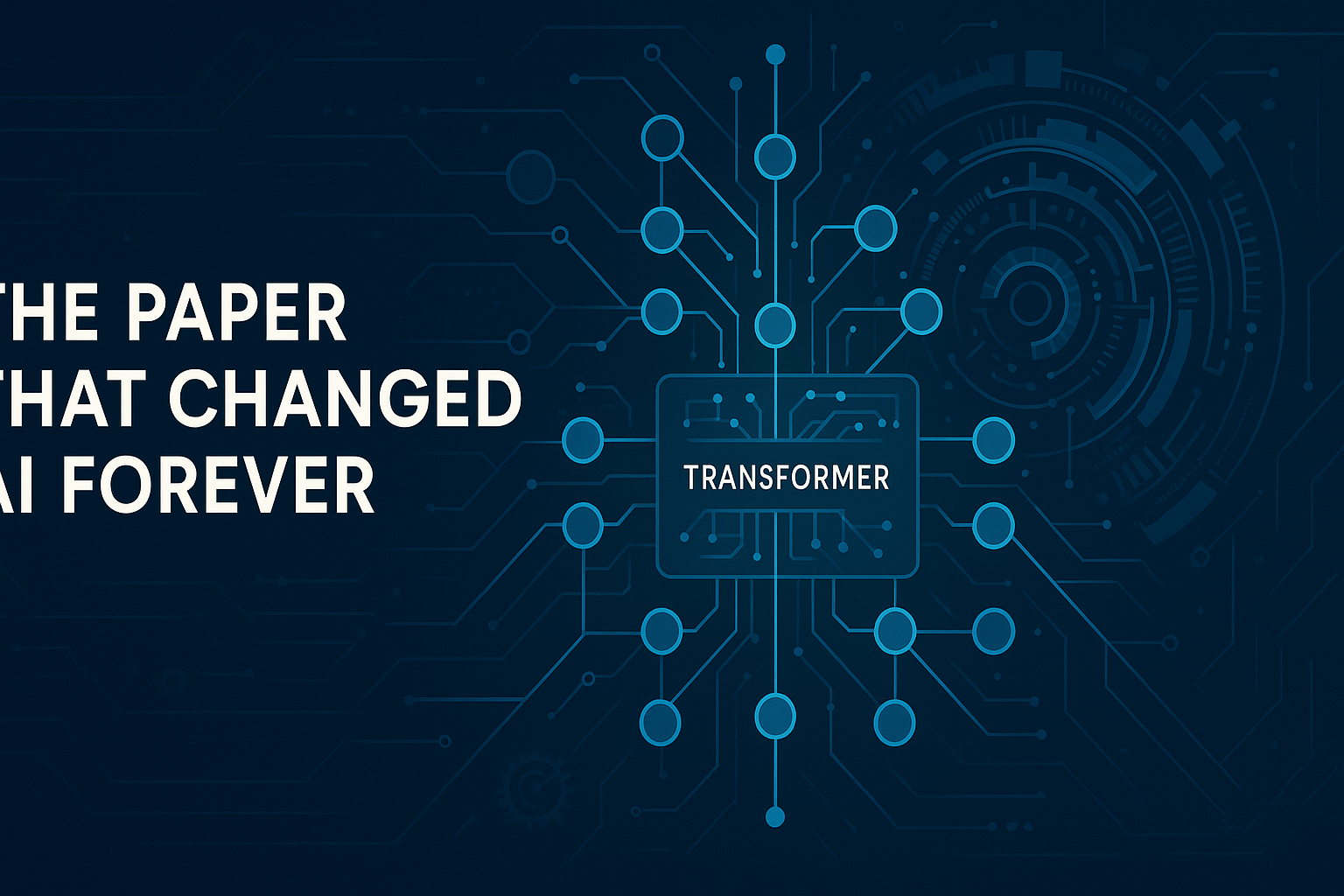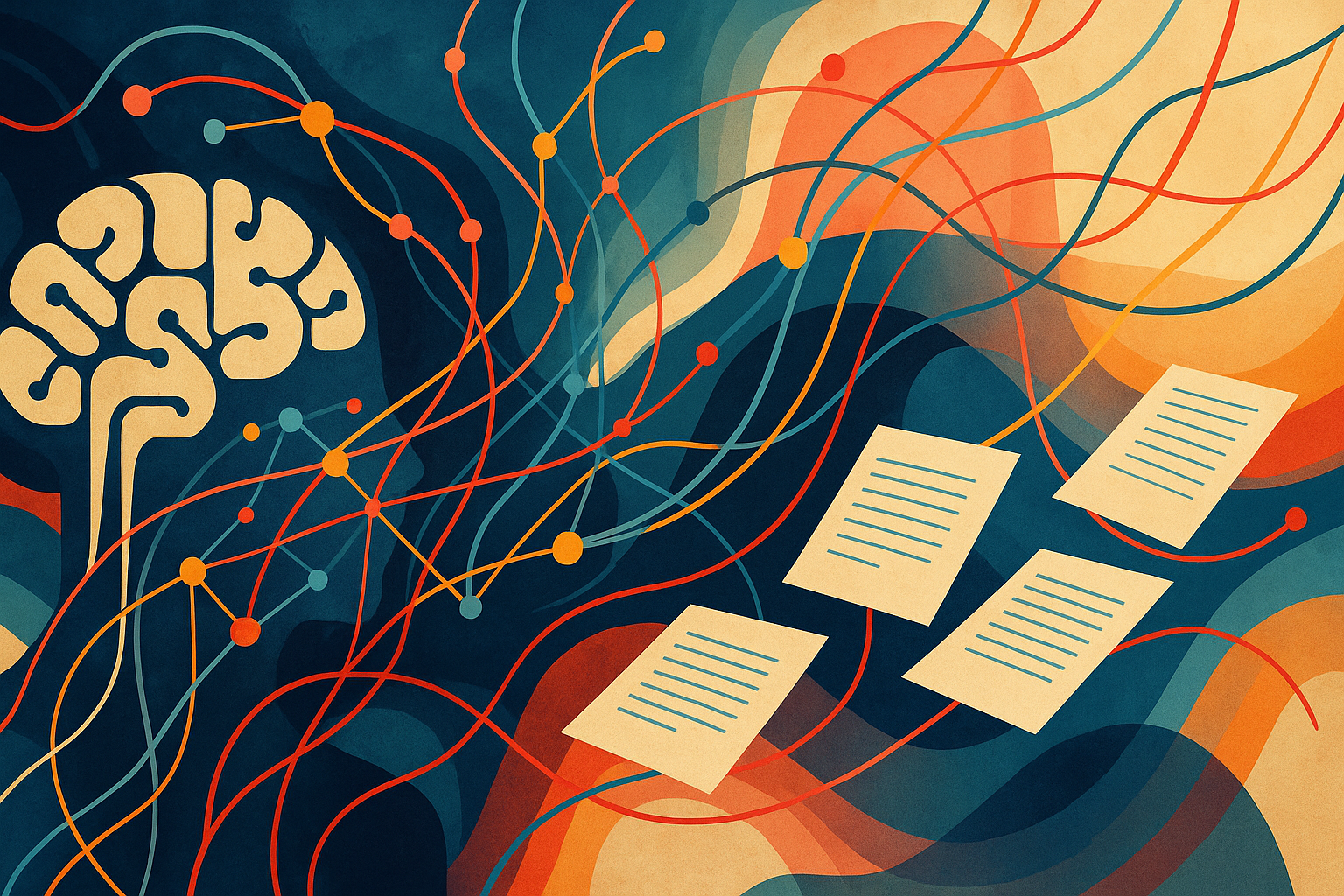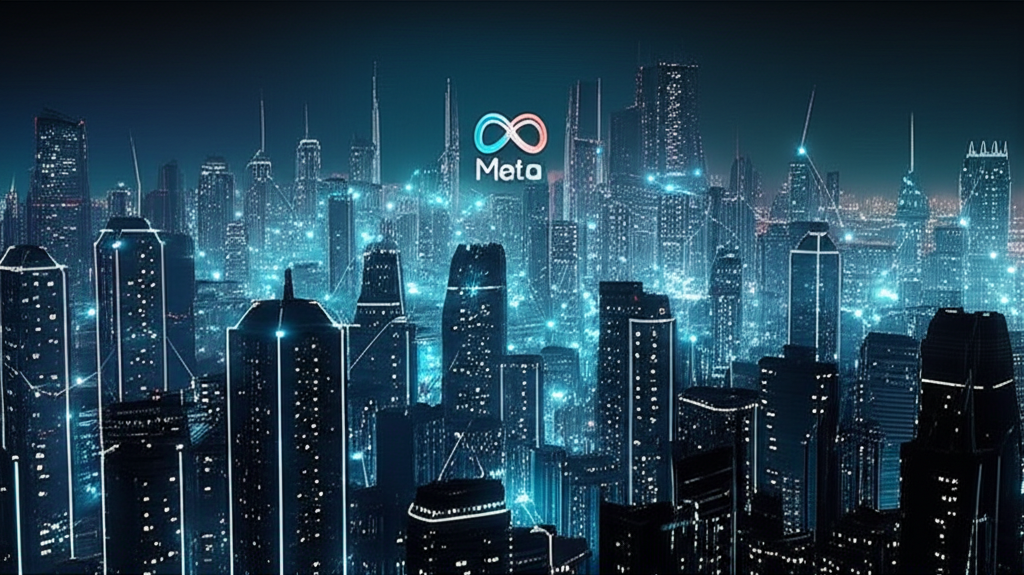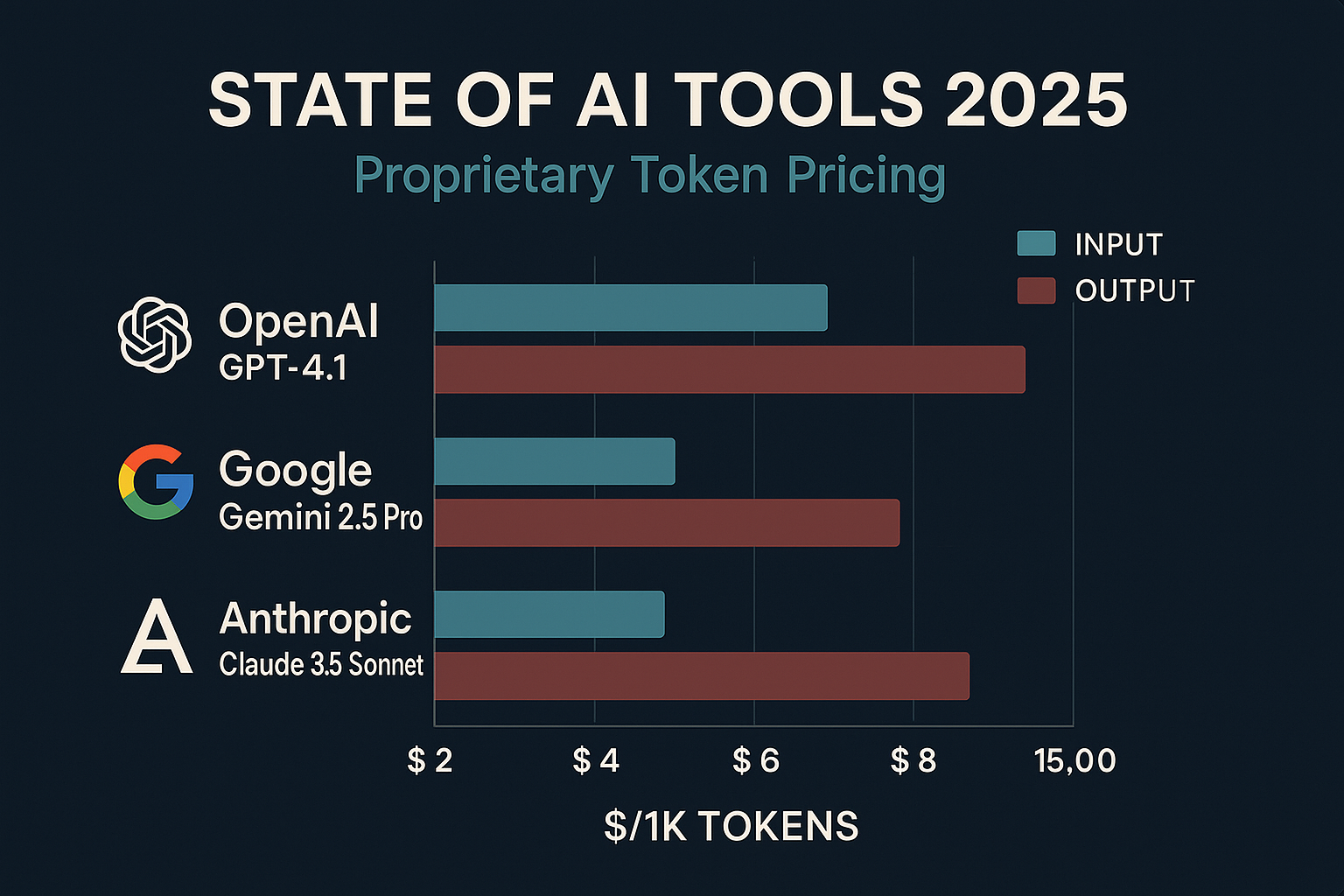The Paper That Changed AI Forever: How “Attention Is All You Need” Sparked the Modern AI Revolution

In June 2017, a brief 15-page paper titled “Attention Is All You Need” appeared on arXiv, introducing the Transformer architecture. Authored by Ashish Vaswani, Noam Shazeer and colleagues at Google, this work didn’t merely tweak existing neural-network designs—it upended decades of conventional wisdom about sequence modeling. By replacing recurrence and convolutions with pure attention mechanisms, Transformers unlocked unprecedented parallelism, scalability, and representational power. Today, everything from machine translation to protein folding, from chatbots to image generators owes its breakthroughs to this seminal paper.
1. From Sequential Bottlenecks to Global Context
Prior to Transformers, Recurrent Neural Networks (RNNs) and their gated variants like Long Short-Term Memory (LSTM) networks dominated natural-language tasks. These architectures process inputs token by token, carrying a hidden state forward through the sequence. While effective, their inherently sequential nature creates two major drawbacks:
Limited parallelism: During training and inference, each token’s representation must wait for the previous token’s processing, underutilizing modern GPU hardware.
Difficulty with long-range dependencies: As sequences grow longer, signals either vanish or explode through many recurrent steps—making it hard to relate words at opposite ends of a sentence.
Transformers break free by computing self-attention over the entire input in one shot. Every token “attends” to every other, producing context-aware representations in parallel. This global view dramatically enhances both efficiency and the model’s ability to capture long-distance relationships.
2. The Mechanics of Attention
2.1 Scaled Dot-Product Attention
At its core lies a deceptively simple operation:
Attention(Q,K,V)=softmax(QK⊤dk) V\text{Attention}(Q, K, V) = \text{softmax}\Bigl(\tfrac{Q K^\top}{\sqrt{d_k}}\Bigr)\,VAttention(Q,K,V)=softmax(dkQK⊤)V
Here, Q (queries), K (keys), and V (values) are linear projections of the input embeddings. By taking dot-products between queries and keys (scaled by the square root of key dimension dkd_kdk), the model computes a weight for each token pair, then aggregates values accordingly—all via efficient matrix multiplications.
2.2 Multi-Head Attention
Rather than a single attention operation, Transformers deploy multiple “heads” in parallel. Each head learns a distinct projection subspace, enabling the model to:
Capture short-range syntax (e.g., verb-subject agreement)
Model long-range semantics (e.g., topic coherence across paragraphs)
Focus on positional cues and phrase-level patterns
By concatenating and re-projecting these heads, the Transformer synthesizes diverse relational insights into a unified representation.
2.3 Positional Encodings
Since attention treats all positions equally, Transformers inject sequence order via sinusoidal positional encodings. These wave-based embeddings allow the model to infer relative distances and generalize to sequence lengths beyond training.
3. Efficiency and Scalability
Transformers’ attention layers execute in O(n²·d) time for sequence length n and model dimension d, but crucially they do so in parallel, unlike the O(n·d²) sequential steps of RNNs. This parallelism translates into:
Faster training on GPU clusters
Feasible scaling to billions of parameters
Memory advantages for typical sentence lengths (where n < d)
These gains paved the way for the modern era of large language models (LLMs), whose performance often scales logarithmically with parameter count and dataset size.
4. Early Triumphs: Machine Translation
In their landmark experiments, Vaswani et al. demonstrated that Transformers outperformed RNN- and CNN-based state-of-the-art on:
English→German (BLEU score: 27.3 for the base model, 28.4 for the larger configuration)
English→French with similar gains
Crucially, these results came with far fewer floating-point operations (∼3.3×10¹⁸ vs. >10²⁰ FLOPs), proving that attention could deliver both accuracy and efficiency.
5. Beyond Text: Vision, Speech, and Biology
Researchers soon realized that any data representable as a sequence of tokens could benefit:
Vision Transformers (ViTs): Treat image patches as tokens; achieve or surpass CNN performance in classification and detection.
Speech Recognition: Convert waveforms to spectrograms, then apply Transformer encoders or encoder–decoder setups—yielding robust, multilingual transcription systems.
Protein Folding & Genomics: Model amino-acid sequences or DNA segments with self-attention, identifying crucial functional motifs and accelerating drug discovery.
6. The Transformer Ecosystem: From BERT to ChatGPT
6.1 BERT & the Encoder Revolution
BERT (Bidirectional Encoder Representations from Transformers) harnessed only the encoder stack, training on masked-language modeling from both directions. This bidirectionality unlocked state-of-the-art performance in tasks like question answering, named-entity recognition, and sentiment analysis. Google’s search engine integrated BERT in 2019, markedly improving query understanding.
6.2 GPT & the Generative Wave
OpenAI’s GPT line leveraged only the decoder stack in an autoregressive fashion—predicting each token from its predecessors. As GPT scaled from millions to hundreds of billions of parameters, it exhibited emergent abilities: zero- and few-shot learning, coherent story generation, code synthesis, and more. The debut of ChatGPT in November 2022 brought Transformer-powered conversation to the mainstream, igniting a global AI boom.
7. Multimodal and Enterprise Applications
Modern Transformer variants fuse modalities—text, image, audio—into unified frameworks:
DALL·E, Stable Diffusion: Text-to-image synthesis that understands nuance in prompts.
CLIP, ALIGN: Joint text–image embedding spaces enabling powerful retrieval and captioning.
Code Generation: GitHub Copilot and similar assistants, trained on vast codebases, boost developer productivity.
Enterprises leverage Transformers for customer support chatbots, automated content creation, market analysis, and decision intelligence, often via easy-to-integrate APIs from providers like OpenAI, Hugging Face, and Anthropic.
8. The Road Ahead: Efficiency, Ethics, and New Architectures
While the “bigger-is-better” trend continues, researchers focus on efficient Transformers (e.g., sparse attention, low-rank factorization, dynamic routing) to tame resource demands. Hybrid models—combining attention with state-space layers or recurrence—explore new trade-offs between speed and context length.
At the same time, the community wrestles with bias mitigation, model transparency, and responsible deployment. As Transformers infiltrate healthcare, finance, legal, and other high-stakes domains, ensuring fairness and safety becomes paramount.
9. Conclusion: The Enduring Power of Attention
Nearly eight years on, “Attention Is All You Need” remains the lodestar of AI research. Its core insight—that a simple, parallelizable attention mechanism can replace complex recurrent or convolutional structures—has proven both elegant and enduring. From powering today’s LLMs to inspiring tomorrow’s efficient architectures, the Transformer's legacy is a testament to the fact that often, simplicity plus insight drives the greatest revolutions.
Source: https://arxiv.org/html/1706.03762v7
Stay in the loop, get exclusive insights, and never miss a new tool or discount:
Telegram: https://t.me/+CxjZuXLf9OEzNjMy
Reddit: https://www.reddit.com/r/BestAIToolsORG/
X (Twitter): https://x.com/bitautor36935
Facebook: https://www.facebook.com/profile.php?id=61577063078524
Instagram: https://www.instagram.com/bestaitoolsorg/
LinkedIn: https://www.linkedin.com/company/best-ai-tools-org
YouTube: https://www.youtube.com/@BitAutor
Medium: https://medium.com/@bitautor.de
Recommended AI tools
Sora
Video Generation
Create stunning, realistic videos and audio from text, images, or video—remix and collaborate with Sora, OpenAI’s advanced generative video app.
Transformers
Conversational AI
State-of-the-art AI models for text, vision, audio, and beyond—open-source tools for everyone.
Databricks
Data Analytics
Bring AI to your data. Bring AI to the world.
Kling AI
Video Generation
Transform your ideas into stunning videos and images with AI
MediSphere
Productivity & Collaboration
Intelligent Healthcare Management for Doctors & Staff
Snowflake (AI Data Cloud)
Data Analytics
Your Data. Your AI. One Cloud.


